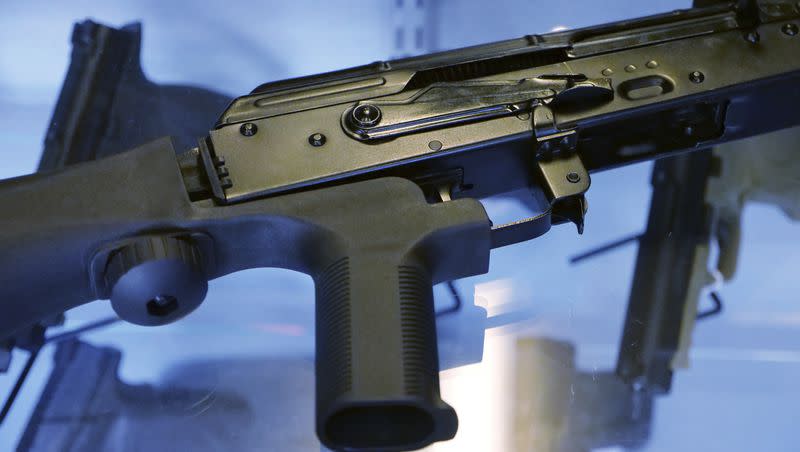Will bump stocks become legal again?

Several challenges to a federal ban on an accessory that makes a semi-automatic weapon work like a machine gun continue to make their way through the courts, including a Utah case.
The U.S. Supreme Court will decide in late October or early November whether to hear a case regarding a device known as a bump stock. Of the cases that have petitioned the court, two were decided in favor of the plaintiff and one for the government in three separate federal appeals courts.
At issue is whether the accessory is a “machine gun” as defined in federal law because it is designed and intended for use in converting a rifle into a machine gun or into a weapon that fires “automatically more than one shot ... by a single function of the trigger.”
The New Civil Liberties Alliance, which represents Utah gun enthusiast Clark Aposhian, is challenging a Bureau of Alcohol, Tobacco, Firearms and Explosives rule that classifies a bump stock as a machine gun. The group also represents Texas gun shop owner Michael Cargill in another case now pending before the Supreme Court.
The groups argue that if bump stocks are to be banned, Congress must make that decision, not an agency such as ATF.
What is the Utah bump stock case?
Aposhian’s case is a little different than the others because it’s not about whether bump stocks should be banned but whether the ATF acted lawfully in how it banned them.
A federal judge in Utah last week ruled in the government’s favor. Aposhian, chairman of the Utah Shooting Sports Council, intends to appeal, which would send the case back to the 10th Circuit of Appeals in Denver for the second time. A court rejected Aposhian’s attempt to block the rule in 2020.
Related
The Utah case isn’t among those the Supreme Court is considering, but Aposhian and his lawyer say it isn’t over.
“I think it’s important to keep the case going because you never know what’s going to happen in other cases,” New Civil Liberties Alliance attorney Richard Samp said on Aposhian’s radio show “Gun Radio Utah” last week.
But if the Supreme Court takes one of the other cases, it would supersede Aposhian’s case. The high court’s ruling would be binding in the Utah case.
Why were bump stocks banned?
Bump stocks came under intense scrutiny after a gunman used them to kill 58 people and wound 500 others at a country music festival in Las Vegas in 2017. He fired more than 1,000 rounds in 11 minutes.
The law defines a machine gun as one that fires more than one shot automatically by a single function of the trigger. A bump stock uses the recoil energy after a shot is fired to keep a gun firing by rapidly bumping the trigger against the shooter’s finger.
The Trump administration adopted a regulation that redefined the devices as machine guns, therefore banning them under existing law. The rule directed owners to destroy or surrender their bump stocks to the ATF before it took effect in March 2019 or face criminal penalties. There were an estimated 520,000 bump stock owners at that time.
Related
What does the government say about bump stocks?
The Department of Justice has argued that the ATF previously not classifying the bump stock as a machine gun was erroneous, and the 2019 rule corrected that mistake.
It contends Congress did not distinguish between a gun that allows a shooter to pull the trigger once and produce repeated fire or pulling a trigger once and applying pressure to a slightly different part of the weapon to continuously fire as with a bump stock. The DOJ argues that a ban on machine guns would be largely meaningless if it could so easily be circumvented.
Related

